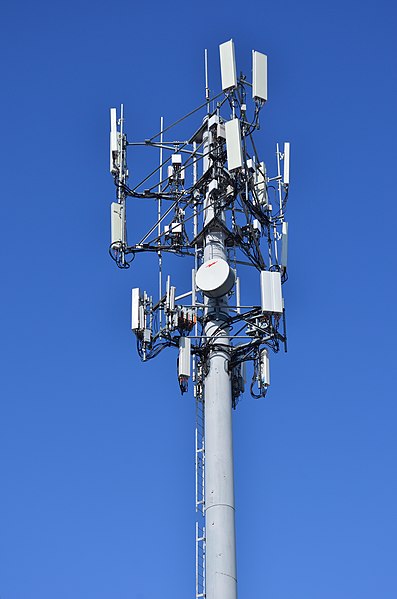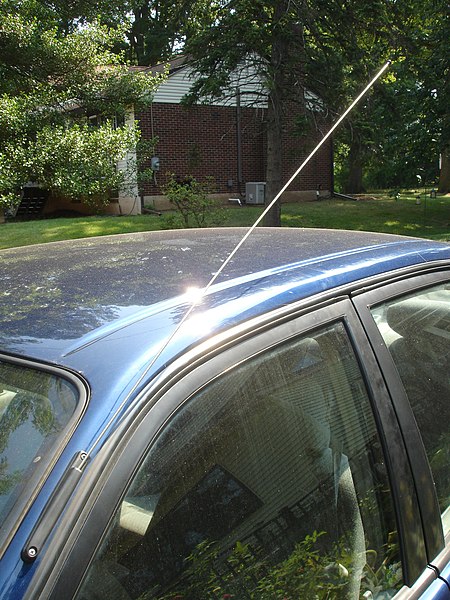In antenna theory, a phased array usually means an electronically scanned array, a computer-controlled array of antennas which creates a beam of radio waves that can be electronically steered to point in different directions without moving the antennas.
The general theory of an electromagnetic phased array also finds applications in ultrasonic and medical imaging application and in optics optical phased array.
US PAVE PAWS active phased array ballistic missile detection radar in Alaska. Completed in 1979, it was one of the first active phased arrays.
Closeup of some of the 2677 crossed dipole antenna elements that make up the plane array. This antenna produced a narrow "pencil" beam only 2.2° wide.
Active Phased Array Radar mounted on top of Sachsen-class frigate F220 Hamburg's superstructure of the German Navy
AN/SPY-1A radar installation at National Severe Storms Laboratory, Norman, Oklahoma. The enclosing radome provides weather protection.
In radio engineering, an antenna or aerial is the interface between radio waves propagating through space and electric currents moving in metal conductors, used with a transmitter or receiver. In transmission, a radio transmitter supplies an electric current to the antenna's terminals, and the antenna radiates the energy from the current as electromagnetic waves. In reception, an antenna intercepts some of the power of a radio wave in order to produce an electric current at its terminals, that is applied to a receiver to be amplified. Antennas are essential components of all radio equipment.
Multiple patch (rectangular) antennas found atop a Cellular Tower
Antennas of the Atacama Large Millimeter/submillimeter Array
An automobile's whip antenna, a common example of an omnidirectional antenna
Half-wave dipole antenna








